Figurines
Figurines are usually made of fired clay formed either by hand modelling or in a prepared mold. In addition to plastic decoration, they were often covered with stucco and/or paint. Occasionally, carved stone figurines are also found, including semi-precious stone such as jadeite; or in larger examples, of basalt or other coarse materials. Ceramic figurines were an abundant artifact class recovered at UA-1.
Ethnohistoric references to figurines are rare and not very informative: they were hung in cornfields (Durán 1971: 419), buried beneath temazcales (Durán 1971:270), and thrown into streams and springs as offerings to the goddess Chalchiutlicue (Durán 1971:269). Ruiz de Alarcón (1984:49-52, 60-63) described the use of "idols" in the early Colonial period, including some with faces of the gods and one that was a small stone frog. Archaeological figurines were often formed in the likeness of supernatural members of the religious pantheon. On this basis, it is likely that figurines had a primary function in ritual practice.
In contrast to the ethnohistoric record, discussion of figurines is prominent in the archaeological literature from central Mexico, where they have been used to construct chronologies and to infer religious pantheons (Cook de Leonard 1971). One of the most detailed figurine analyses was conducted by Mary H. Parsons (1972a) using Postclassic examples from the Teotihuacan valley. Cholula figurines have been studied previously by Noguera (1954), Müller (1978), Orea (n.d.), and Sarah Galloway (n.d.).
Several recent studies have used Mesoamerican figurines for broader interpretations of social context. Veronica Kann (1989) analyzed the costuming of male and female figurines from Classic period Matacapan (Veracruz), suggesting that a dramatic increase in the frequency and degree of costume elaboration on female figurines related to an increase in the social value of textile production. Two recent studies have considered Postclassic figurines from the Valley of Mexico. Susan Evans (1990) noted a high frequency of female goddess figurines at the rural Aztec site of Cihuatecpan, and suggested that the Mother Goddess complex was particularly important within household ritual. Elizabeth Brumfiel (1990) compared Early and Late Aztec figurines from several sites in an attempt to interpret diachronic and contextual differences in figurine use as a means of measuring the penetration of a state ideology of male dominance and the development of a popular ideology of resistance.
The use of figurines in ritual contexts is fairly well established. An alternative use, perhaps as a secondary function for broken pieces, might have been as toys. This possibility is based in part on the relatively high frequencies of figurine fragments found on sites in Cholula, and their general lack of concentration within a site. This secondary use might also explain the presence of anachronistic figurines in single component contexts, where children collected caritas ("little faces") from adjoining fields and brought them home to play with.
Figurines offer a wide range of research potentials. Since Cholula was well-known as a religious center devoted to the cult of Quetzalcoatl, the UA-1 remains could relate to the integration of those beliefs into household ritual. A second research potential of the UA-1 figurines is their presence within excavated contexts relating to features. Relatively few figurines have been reported from controlled excavations, with the majority recovered as a result of surface surveys or large scale excavations with minimal spatial control. At UA-1, figurines were found in association with floors, middens, and wells, but also mixed fill deposits. The spatial analysis of their distribution could provide valuable information on the systemic contexts of figurine use, including ritual practice as well as possible recreational use.
A total of 389 figurine fragments were recovered at UA-1. Many of these were found while sorting sherd bags, so there are potentially more fragments that could still be recovered with further analysis. Anthropomorphic figurines were the most common, and include heads (caritas) and body parts, but complete figures are rare. Zoomorphic figurines were also found, representing mammals and birds.
The spatial distribution of figurines is plotted in Figure 134, using information recorded on the UA-1 object cards. No pattern is identifiable for the upper levels of the site, where figurines occurred throughout the site. In the occupation levels, however, several concentrations were recognized, including Units N4/E1, N2/W1, S1/E2, and S7/E1. The two highest concentrations occurred outside of the structure, while Unit S7/E1 includes part of the midden deposit. The one concentration within the structure appeared in the northwest corner of Room 4, in the area of the intrusive group burial (although figurines were not included among the grave goods).
This pattern may be explained either as more intensive use and breakage in the porch areas, or in relation to sweeping of broken fragments out of the structure and onto the porch. What is apparent is that figurines were an important component of the Structure 1 context.
Working with a limited sample (n=163), Wolfman (1968: 15-18), was able to identify 63 of the human figurines using the typology developed by Noguera (1954:158-165). Forty-four of these were identifiable as Postclassic types, relating to the following categories (Table 33):
TABLE 33
FIGURINE CLASSIFICATION BASED ON NOGUERA'S TYPES
(after Wolfman 1968:17)
Type 1 = 6 Type 6 = 3
2 = 3 7 = 5
3 = 4 8 = 3
4 = 4 9 = 1
5 = 11 10 = 4
Another five figurines conformed to Classic Teotihuacan styles, and 14 dated to the Formative period. Note that almost no Formative and only limited Classic period ceramics were recovered at UA-1, indicating that these were either curated, or more likely were collected by the original inhabitants from the surrounding area. An additional 24 figurines represented zoomorphic figures, including dogs, birds, and monkeys. Unfortunately, many of the figurines used in Wolfman's original analysis were missing at the time of our re-analysis, so it was impossible to expand on this study.
Distinctive figurines associated with Structure 1 include:
UA-1 #9152 - A small female head with large ear plugs and a coiled hairstyle/headdress (Figure 135a-b) was found near the south wall of Room 3 (S2/E1 III).
UA-1 #9161 - A large face of the god Tlaloc included remains of a ring handle on the back (Figure 135c-d), suggesting that it functioned in ritual display. It was found above the porch to the east of Room 4 (N1/E2 II).
Figure 135. Structure 1 figurines: a-b, UA-1 #9152; c-d, UA-1 #9161
UA-1 #9267 - A complete figure of a woman (?) with arms crossed in front of the chest as if holding something (Figure 136a). The face is prognathic, with slanted eyes, a round lip plug, and small ear plugs. Although unbroken, thelower body was not present, and the figurine ended in a bulb as if it were intended to be attached to something. This object was found in a sherd concentration on the floor of Room 2 (S2/E1 IV).
UA-1 #9475 - A tiny anthropomorphic mask with a hollowed back and perforations on the temples and chin where it could have been attached (Figure 136b-c), perhaps over another figurine. This object was found in the porch area north of Room 4 (N4/E1 IV).
UA-1 #9531 - A small male (?) head with a looped headband and large drooping ear plugs (Figure 136d-f). This was one of the most delicately crafted of the figurines. It had small holes on either side of the face, so it was probably suspended on string, perhaps as a pendant. This figurine was found below the porch to the east of Room 3 (S2/E2 IV), so it may relate to the earlier occupation of the structure.
UA-1 #9873 - A face of an individual with eyes closed (signifying death) and wearing a flayed skin, as indicated by the fold around the mouth (Figure 137a-b). This figure probably represented the god Xipe Totec, "the flayed one." It was found beneath the porch east of Room 3 (S1/E2 V).
Figure 136. Structure 1 figurines: a, UA-1 #9267; b-c, UA-1 9475; d-f, UA-1 #9531
UA-1 #10097 - Another small mask with holes in the sides of the head (Figure 137c-d). It possibly represented a monkey, based on the pronounced nose and mouth. The object was found west of the temazcal (S3/W3 II).
UA-1 #10182 - A head from a Tlaloc effigy, identified by distinctive goggle eyes and fanged tendrils (Figure 137e), was found in the northeast corner of Room 3 (S1/E1 EB IV). Remnants of stucco and paint were found as decoration.
UA-1 #10412 - A large male head featuring a straight nose bar (Figure 138a-b) was found in Room 3 (S1/W1 EB III). Remains of a protruding ring handle occurred on the back of the figurine, suggesting that it may have been held aloft during ritual display.
UA-1 #11106 - A headless, seated figure with a shield on its back and arms on the knees (Figure 138c). It was found in Room 1 (S2/W1 WB III).
UA-1 #11156 - A small female (?) head featuring traces of red paint on the face, large ear plugs, and an elaborate headdress (Figure 138d-e) was found near the south wall of Room 3 (S2/W1 III).
UA-1 #11222 - This was a large face with a pronounced nose and mouth that probably represented Xipe Totec (Figure 139a-b). This object was found in the fire-box chamber of the temazcal (S3/W2 IV), and may have been a dedicatory offering to the deity associated with skin sores and eye
Figure 137. Structure 1 figurines: a-b, UA-1 #9873; c-d, UA-1 #10097; e, UA-1 #10182
Figure 138. Structure 1 figurines: a-b, UA-1 #10412; c, UA-1 #11106; d-e, UA-1 #11156
disease (Sahagún 1950-1982, Book 1:35; Ortiz de Montellano 1990:131-132).
UA-1 #11840 - A small monkey head was identified by the crest on its head (figure 139c-d). Although monkeys were not native to the central highlands, they were often featured in legends, and were particularly important in the fertility cult. This object was found in the southeast corner of Room 4 (N1/W1 EB III).
UA-1 #11849 - A flat disk with a modelled face and a pronounced nose (figure 139e-f). This object was covered with stucco and then highlighted with black and red paint. It was found in Room 4 near the hearth (N2/W1 EB V).
Figurines found in the Trash Midden included:
UA-1 #9600 - A small mask representing an old person, indicated by deep wrinkles around the mouth and on the forehead (figure 140a-c). Holes were present on the sides of the head for attaching this mask, perhaps onto another figurine.
UA-1 #9968 - A head with a head band and lip plug (Figure 140d-f).
UA-1 #9974 - The head and neck of a man (?) without a headdress, and with large ear plugs (Figure 140g-h).
UA-1 #11067 - A face surrounded with an elaborate headdress and ear plugs.
UA-1 #10134 - The headless torso, with remnants of the arms and legs, of a male, identified by a maxtlatl loin
Figure 139. Structure 1 figurines: a-b, UA-1 #11222; c-d, UA-1 #11840; e-f, UA-1 #11849
Figure 140. Trash Midden figurines: a-c, UA-1 #9600; d-f, UA-1 #9968; g-h, UA-1 #9974
cloth (Figure 141a-b). An unusual feature of this figurine was a hole through the chest, probably indicating heart sacrifice. This figure conforms to a stylistic convention in pre-Columbian Mexico to depict captives and sacrificial victims stripped down to their loin cloth.UA-1 #11283 - A headless, seated female, identified on the basis of costume elements including a quechquemitl cape and long skirt (Figure 141c-e). The figure is seated against a slab, perhaps representing a throne. The individual wears a large circular pendant with two circular appliqués, and the arms are folded across the chest behind the pendant. The person is seated cross-legged, with the legs folded beneath the body. Remnants of blue paint were found on the background panel. A nearly identical example is illustrated in Noguera (1954:161, fig. b). This figurine was found in Well 3, beneath the midden deposit.
UA-1 #11525 - A fragment of a large mask, possibly representing a dog (Figure 142a). The outer surface featured deep wrinkles, and it was covered with stucco.
UA-1 #11579 - A head with elaborate headdress and ear plugs from a slab figurine (Figure 142b-c). The headdress includes coiled hair and cloth, with twin tassels hanging down on either side. A cotton headdress was a diagnostic of the Mother Goddess complex, and twin tassels were often associated with the goddess Xochiquetzal, although they were also typical of Aztec noblewomen.
Figure 141. Trash Midden figurines: a-b, UA-1 #10134; c-e, UA-1 #11283
Figure 142. Trash Midden figurines: a, UA-1 #11525; b-c, UA-1 #11579
Figurines from Structure 2 included:
UA-1 #9735 - A small anthropomorphic cup representing a male with open mouth and nose bar (Figure 143a-c). The face was covered with a layer of stucco and fine line tatooing was faintly visible. The object was found in Unit S1/E6, possibly associated with the intrusive midden deposit.
UA-1 #10028 - A very plain head with minimal facial features (Figure 143d) was found in Unit S2/E6 III. Two perforations in the forehead could have been used to suspend the object as a pendant, or perhaps attach a small mask.
UA-1 #10644 - A large mask with lidded eyes and mouth, diagnostic of Xipe Totec (Figure 144a-c). The eye sockets may have been prepared for shell or stone inlays. This object was found north of Structure 2, beneath the stone wall. It is possible that it was placed as a dedicatory offering during the construction of the wall, although it may have simply been part of the intrusive midden deposit sealed by the subsequent wall construction.
Other notable figurines included:
UA-1 #9573 - A small face with ear plugs surrounded by an elaborate feathered headdress (Figure 145a-b). This object was found north of Structure 2 (N1/E6 V) and the stone wall, at a level just above sterile soil.
UA-1 #10448 - A human leg and foot, made of greenstone (Figure 145c). This was the only non-ceramic figurine found. It was polished, and delicately carved with incised
Figure 143. Structure 2 figurines: a-c, UA-1 #9735; d, UA-1 #10028
Figure 144. Structure 2 figurines: a-c, UA-1 #10644
lines at the knee and toes. This object was found near the compound wall associated with Structure 1 (Trench 1/Section 2 II).
UA-1 #10862 - A headless female figurine with breasts and a long skirt (Figure 145d-e). The hands and feet are incised to indicate fingers and toes, and holes were perforated in the armpits so that the figurine could be suspended. This object was found in Well 1.
UA-1 #10875 - A headless figurine of a female, identified by a triangular quechquemitl cape and long skirt (Figure 146a-b). This object was found in Unit S10/W3 I, south of Structure 1 near the Classic period platform.
UA-1 #10901 - A Colonial style figure with a hat and curly hair on either side of the face (Figure 146c-d). This object was found to the east of Structure 2 (S2/E9 II), near Well 2.
UA-1 #11444 - A headless torso representing a person holding a bowl (Figure 146e-f), found to the north of Structure 1 (N5/E1 IV).
The UA-1 figurines make up a unique data base for Postclassic Cholula because they were recovered during controlled excavations from primary depositional contexts possibly relating to domestic compounds. In his preliminary analysis, Wolfman was able to relate many of the UA-1 figurines to published figurine types from Cholula (Noguera
Figure 145. Additional UA-1 figurines: a-b, UA-1 #9573; c, UA-1 #10448; d-e, UA-1 #10862
Figure 146. Additional UA-1 figurines: a-b, UA-1 #10875; c-d, UA-1 #10901; e-f, UA-1 #11444
1954), suggesting that they are fairly representative of the styles used at the site.
In comparing the UA-1 figurines with other Postclassic sites, however, I have found only occasional similarities. The Tlaloc and Xipe Totec figurines are typical of central Mexican representations of these deities. Slab figurines of females with holes pierced through the arm-pits were also fairly common in the Postclassic period (MacNeish, Peterson, and Flannery 1970).
Many of the other figurine types, however, are less common in the central highlands, and may indicate stylistic contacts with the Gulf Coast. Such attributes as elaborate headdresses and masks may indicate foreign influences. Figurine #11283, representing a woman seated cross-legged in front of a blue slab, displays a theme similar to some of the painted figures at the nearby site of Cacaxtla, which is well-known for its Gulf Coast stylistic motifs (Kubler 1980; Quirarte 1983). Unfortunately, figurines from Postclassic Veracruz are not well known, so comparative collections are presently unavailable to support this association.
In summary, the UA-1 figurines present a rare potential for a contextual analysis of spatial distribution. Concentrations of figurines were found within Structure 1 and in association with the porch areas, but relatively few were found in association with the altar and ritual areas of Room 3. Numerous figurines were also found in the Trash Midden.
One of the most interesting patterns was the presence of female figurines found in both of the pre-Columbian wells, perhaps as evidence for fertility rituals dedicated to the goddess Chalchiutlicue (Durán 1971:269). Stylistic analysis of the figurines indicates some similarities with central Mexican forms, but the UA-1 assemblage also includes several distinctive themes that remain problematic.
Due to the long culture history of Cholula, figurine styles have undergone considerable variation. Relatively little attention has been paid to this important artifact class, however. A recent BA thesis by Chantelle Hug (2007) is the most comprehensive attempt to address Cholula figurines, though this study remains unpublished.
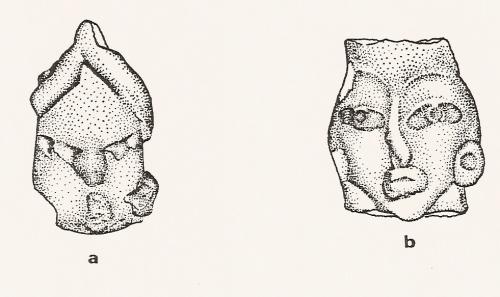
Middle Formative figurines (drawn by R. Ashley Withers)


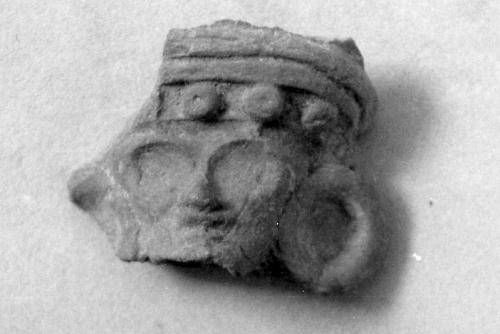

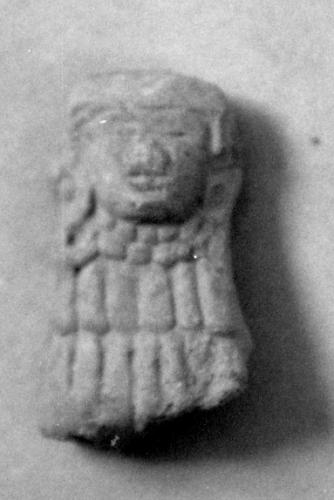
Classic period figurines from the Transito site
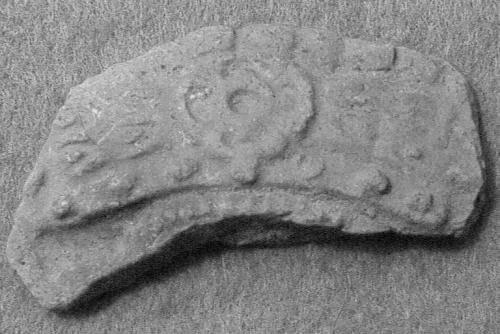

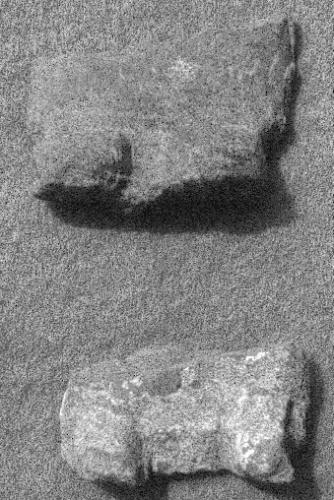
Epiclassic figurines from Patio of the Carved Skulls
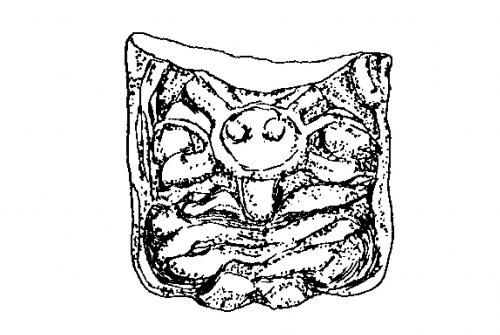

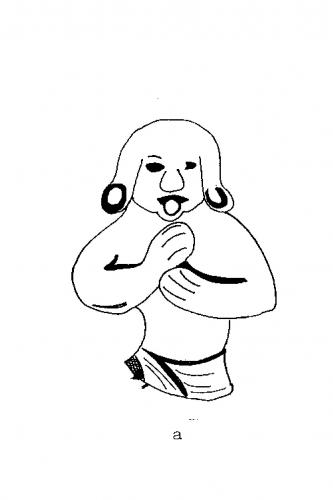
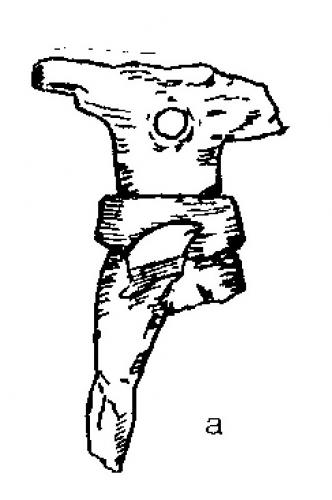
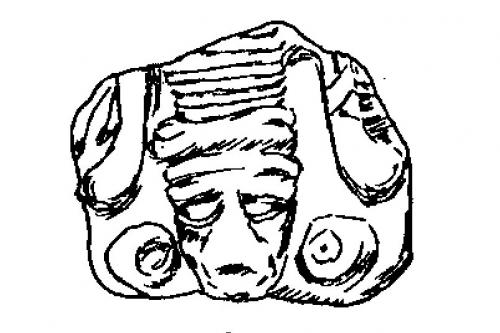

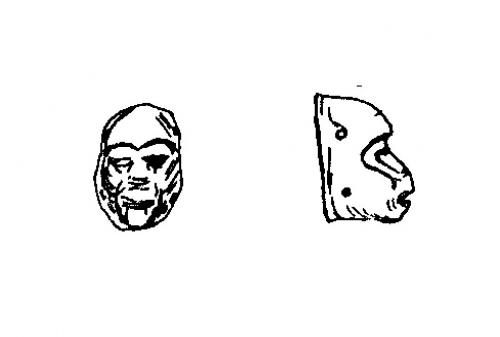
Early Postclassic figurines from UA-1

